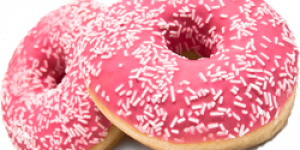There is not many of us who do not like sugar. Sugar is found in many commercial foods bought from sauces, canned fruits, desserts, lollies, cakes, biscuits and soft drinks. Sugar is added to foods for flavour, texture, bulk and as a preserving agent.
Sugar is part of the Carbohydrate (CHO) family and is the name given to the white crystals (sucrose) used in our tea and coffee. But the word sugar actually incorporates 5 main products. They are:
Sucrose: or what most of us know as sugar. It is made up of glucose and fructose. Small amounts are found in fruits and vegetables. It is the main component of brown sugar, golden syrup, molasses and maple syrup.
Glucose: also known as dextrose. It is found in sweet fruits like grapes and berries. It is about half as sweet as sucrose and is what is measured in the blood stream.
Fructose: is the sugar found in fruits, in small amounts in vegetables and honey. It is slightly sweeter than sugar.
Lactose: or milk sugar is the sweet taste in milk.
Maltose: or malt sugar is the sugar from barley and wheat. It is about half as sweet as sugar.
Sucrose or Sugar as we know it provides us a good source of CHO energy, but unfortunately that is about it. It does not contain any protein, vitamins or minerals needed for good health.
Like fats and oils, gram for gram white, brown or raw sugar contains the same amount of energy. So brown sugar is not healthier than normal white sugar, it just has a stronger flavour.
There are foods that claim to be “No added sugar” these are good choices when compared to similar products. But be careful as it does not mean that the food is low in sugar. Always check the nutrition information panel.
What about honey?
Honey comes from bees and the flavour depends of the nectar collected by the bees. It is about 20% water, so has a few less kilojoules than sugar. It does contain a few vitamins and minerals but they are insignificant for health.
When honey is produced from the nectar of plants, other substances from the nectar remain giving some honeys antiseptic or antioxidant properties.
But as with sugar, too much honey can raise blood glucose levels and lead to weight gain. So having a small amount of sugar or honey as part of a healthy diet is not a problem, but as sugar is a part of so many foods we eat, all of us can afford to cut down the amount or sugars and honey we have in our diet.
Fibre
Fibre or dietary fibre is the part of plant food that is not digested in the small intestine, where most of the other food digestion takes place. Fibre moves largely unchanged into the large intestine or large bowel where it is fermented by good bacteria. This produces stool bulk (helping to eliminate waste products and some cholesterol) and gases which are very beneficial for health.
It is recommended that adults eat 25-30g fibre each day. Eating more dietary fibre can help to keep the digestive system healthy and reduce the risk of constipation, diverticular disease, haemorrhoids and bowel cancer.
30gm of fibre is equivalent to:
- ¾ cup Bran flakes or 2 whole wheat breakfast biscuits (5gm), and
- 4 slices of Wholemeal/wholegrain bread (8gm), and
- 3 pieces of fruit with skin (apple, pear and orange (10gm), and
- 2 cups of vegies (10gm)
It is important to eat foods that contain both soluble and insoluble fibre.
Insoluble fibre has a laxative effect as it absorbs water to help soften the contents of the bowel, helping to keep the bowels regular. Insoluble fibre is also very filling. Foods higher in insoluble fibre include:
High fibre breads and cereals, the outer skins of fruit and vegetables, nuts and seeds
Soluble fibre can help blood glucose control in diabetes and may help to lower LDL (bad) cholesterol levels. Soluble fibre also slows stomach emptying, thus keeping us full for longer after eating. Foods higher in soluble fibre include:
Fruits and vegetables, dried beans, lentils and oats
The other type of fibre is resistant starch
Resistant starch: This starch resists digestion in the small intestine. Once in the large intestine, friendly bacteria ferment resistant starch. This process produces substances that help to keep the lining of the bowel healthy. Resistant starch can be found in:
Slightly undercooked pasta (‘al-dente’), under ripe bananas, cooked and cooled potato and ‘Hi-maize’ which is found in commercial food products such as breads and cereals
All three types of fibre are needed for good health. Therefore eating a variety of fibres from many foods has lots of health benefits. Try to eat more high fibre breads and cereals, fruits, vegetables, dried beans and lentils each day.
Read the original post by Rachel Jeffrey APD here







